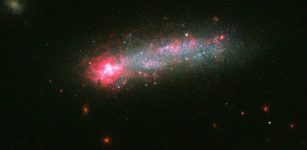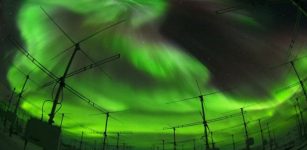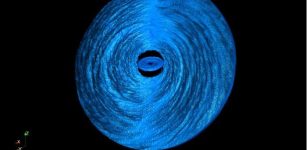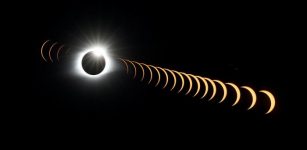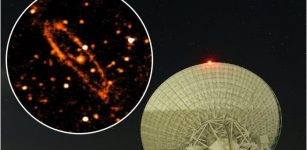Mystery At the Center Of The Milky Way Solved
MessageToEagle.com – Astronomers from Lund University in Sweden have now found the explanation to a recent mystery at the center of the Milky Way galaxy: the high levels of scandium discovered last spring near the galaxy’s giant black hole were in fact an optical illusion.
Last spring, researchers published a study (with various possible explanations) about the astonishing and dramatically high levels of three different elements in red giant stars, located less than three light years away from the big black hole at the center of our galaxy.
Now another group of astronomers from Lund University among others, in collaboration with UCLA in California, have found an explanation for the high levels of scandium, vanadium and yttrium. They argue that the so-called spectral lines presented last spring were actually an optical illusion. Spectral lines are used to find out which elements a star contains – by using its own light.
“These giant red stars have used up most of their hydrogen fuel and their temperatures are therefore only half of the sun’s”, says Brian Thorsbro, lead author of the study and doctoral student in astronomy at Lund University.
The new study shows, the lower temperatures of the giant stars helped to create the optical illusion that appeared in the measurements of spectral lines. Specifically, it means that the electrons in the elements behave differently at different temperatures, which in turn can be misleading when measuring the spectral lines of elements in different stars. The conclusion is the result of a close collaboration between astronomers and atomic physicists.
Using the W. M. Keck Observatory on Mauna Kea, Hawaii, Brian Thorsbro and his colleagues are currently conducting a comprehensive mapping of the central areas of the Milky Way, exploring the spectral lines in the light from different stars to find out which elements they contain.
“Our research collaboration is world-leading in terms of systematically mapping the elements contained in the huge central star cluster – the star cluster that surrounds the black hole”, research leader and astronomer Nils Ryde at Lund University said in a press release.
Researchers have studied the part of the spectrum consisting of near-infrared light, i.e. the heat radiation emitted by the stars. The reason for this is that infrared light can penetrate the dust that obstructs the line-of-sight between us and the center of the Milky Way, approximately 25 000 light years away. The technology for recording this light is very advanced, and has only recently become available to astronomers.
“We have only started to map the stellar compositions in these central areas of the Milky Way”, says Nils Ryde.
MessageToEagle.com



